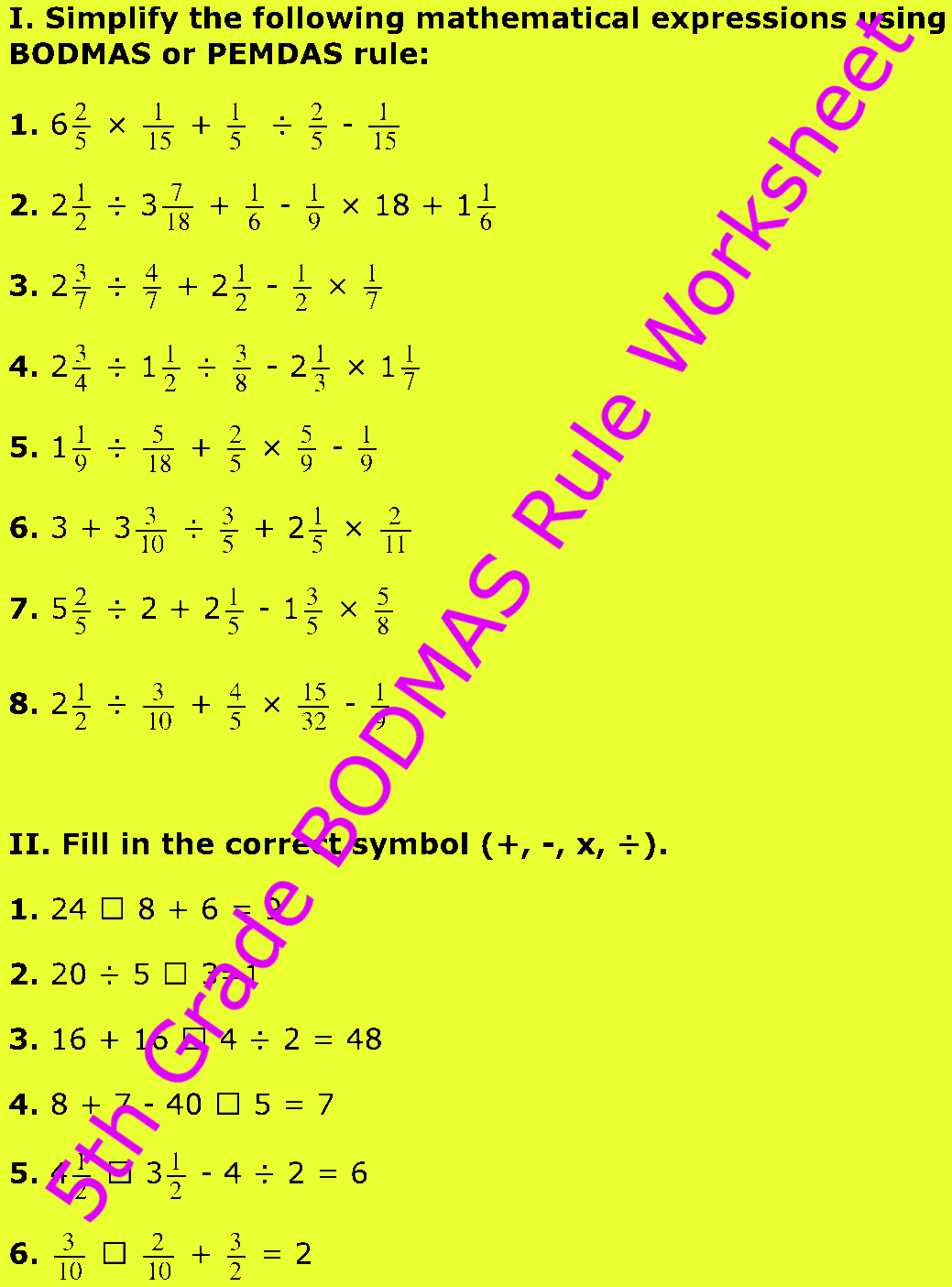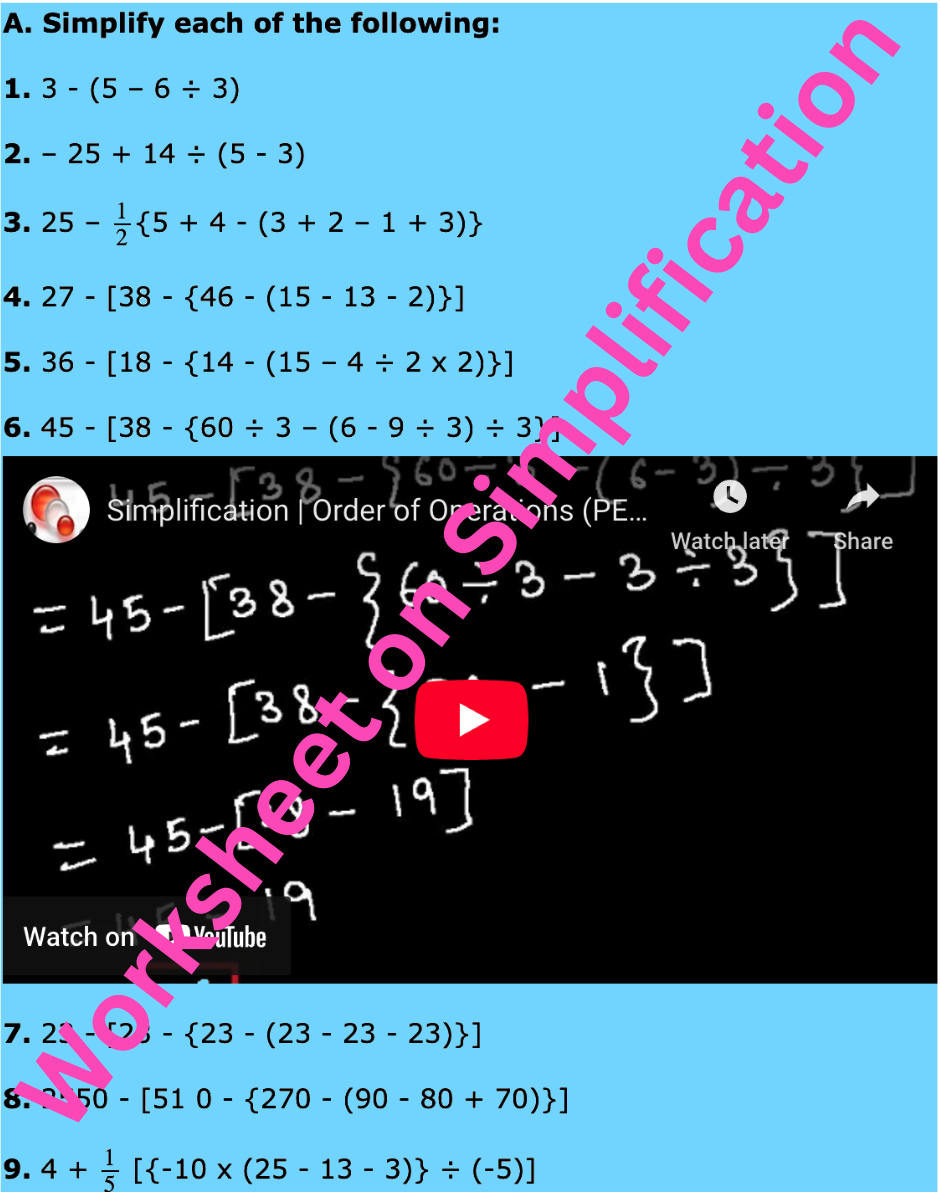Mean
Mean or average or arithmetic mean is one of the representative values of data. We can find the mean of observations by dividing the sum of all the observations by the total number of observations.
Mean of raw data:
If x1, x2, x3, ……. xn are n observations, then
Arithmetic Mean = (x1, x2, x3, ……. xn)/n
= (∑xi)/n
∑ (Sigma) is a Greek letter showing summation
1. Weights of 6 boys in a group are 63, 57, 39, 41, 45, 45. Find the mean weight.
Solution:
Number of observations = 6
Sum of all the observations = 63 + 57 + 39 + 41 + 45 + 45 = 290
Therefore, arithmetic mean = 290/6 = 48.3
Mean of tabulated data:
Then mean of the tabulated data is given by
= (f1 x1 + f2 x2 + f3 x3 + ……. fn xn)/(f1 + f2 + f3 + …… fn) = ∑(fixi)/∑fi
2. A die is thrown 20 times and the following scores were recorded 6, 3, 2, 4, 5, 5, 6, 1, 3, 3, 5, 6, 6, 1, 3, 3, 5, 6, 6, 2.
Prepare the frequency table of scores on the upper face of the die and find the mean score.
Solution:
| Number on the upper face of die |
Number of times it occurs (frequency) |
fixi |
| 1 | 2 | 1 × 2 = 2 |
| 2 | 2 | 2 × 2 = 4 |
| 3 | 5 | 3 × 5 = 15 |
| 4 | 1 | 4 × 1 = 4 |
| 5 | 4 | 5 × 4 = 20 |
| 6 | 6 | 6 × 6 = 36 |
Therefore, mean of the data = ∑(fixi)/∑fi
= (2 + 4 + 15 + 4 + 20 + 36)/20
= 81/20
= 4.05
3. If the mean of the following distribution is 9, find the value of p.
| X | 4 | 6 | p + 7 | 10 | 15 |
| f | 5 | 10 | 10 | 7 | 8 |
Solution:
Calculation of mean
| xi | fi | xifi |
| 4 | 5 | 20 |
| 6 | 10 | 60 |
| p + 7 | 10 | 10(p + 7) |
| 10 | 7 | 70 |
| 15 | 8 | 120 |
∑fi = 5 + 10 + 10 + 7 + 8 = 40
∑ fixi = 270 + 10(p + 7)
Mean = ∑(fixi)/∑fi
9 = {270 + 10(p + 7)}/40
⇒ 270 + 10p + 70 = 9 × 40
⇒ 340 +10p = 360
⇒ 10p = 360 - 340
⇒ 10p = 20
⇒ p = 20/10
⇒ p = 2
Mean of grouped data:
While calculating the mean of the grouped data, the values x1, x2, x3, ……. xn are taken as the mid-values or the class marks of various class intervals. If the frequency distribution is inclusive, then it should be first converted to exclusive distribution.
4. The following table shows the number of plants in 20 houses in a group
| Number of Plants | 0 - 2 | 2 - 4 | 4 - 6 | 6 - 8 | 8 - 10 | 10 - 12 | 12 - 14 |
| Number of Houses | 1 | 2 | 2 | 4 | 6 | 2 | 3 |
Find the mean number of plans per house
Solution:
We have
| Number of Plant | Number of Houses (fi) |
Class Mark (xi) |
fixi |
| 0 - 2 | 1 | 1 | 1 × 1 = 1 |
| 2 - 4 | 2 | 3 | 2 × 3 = 6 |
| 4 - 6 | 2 | 5 | 2 × 5 = 10 |
| 6 - 8 | 4 | 7 | 4 × 7 = 28 |
| 8 - 10 | 6 | 9 | 6 × 9 = 54 |
| 10 - 12 | 2 | 11 | 2 × 11 = 22 |
| 12 -14 | 3 | 13 | 3 × 13 = 39 |
∑fi = 1 + 2 + 2 + 4 + 6 + 2 + 3 = 20
∑fi xi =1 + 6 + 10 + 28 + 54 + 22 + 39 = 160
Therefore, mean = ∑(fixi)/ ∑fi = 160/20 = 8 plants
● Statistics
-
Real Life Statistics
- Terms Related to Statistics
- Frequency Distribution of Ungrouped and Grouped Data
- Use of Tally Marks
- Class Limits in Exclusive and Inclusive Form
- Construction of Bar Graphs
- Mean
- Mean of the Tabulated Data
- Mode
- Median
- Construction of Pie Chart
- How to Construct a Line Graph?
Didn't find what you were looking for? Or want to know more information about Math Only Math. Use this Google Search to find what you need.
Recent Articles
-
Counting Numbers from 1 to 50 | Match the Number | Missing Numbers
Apr 04, 25 03:46 PM
In counting numbers from 1 to 50, recognize the numbers, count and then join the numbers in the correct number order. Here we mainly need eye-hand coordination to draw the picture and maintain the num -
Counting Eleven to Twenty with Numbers and Words |Numbers from 11 - 20
Apr 04, 25 03:21 PM
Counting eleven to twenty with numbers and words are explained below. One ten and one more is eleven. Eleven comes after ten. One ten and two more is twelve. Twelve comes after eleven. -
5th Grade BODMAS Rule Worksheet | PEMDAS | Order of operations|Answers
Apr 03, 25 03:11 PM
In 5th Grade BODMAS Rule Worksheet you will get different types of problems on mathematical expressions involving different operations, mathematical expression with 'brackets' and 'of' and simplifying… -
Worksheet on Simplification | Simplify Expressions | BODMAS Questions
Apr 03, 25 02:58 PM
In worksheet on simplification, the questions are based in order to simplify expressions involving more than one bracket by using the steps of removal of brackets. This exercise sheet -
Divisible by 2 Video |Test of Divisibility by 2 Trick| Rules| Examples
Apr 03, 25 10:25 AM
A number is divisible by 2 if the digit at unit place is either 0 or multiple of 2. So a number is divisible by 2 if digit at its units place is 0, 2, 4, 6 or 8.





New! Comments
Have your say about what you just read! Leave me a comment in the box below. Ask a Question or Answer a Question.